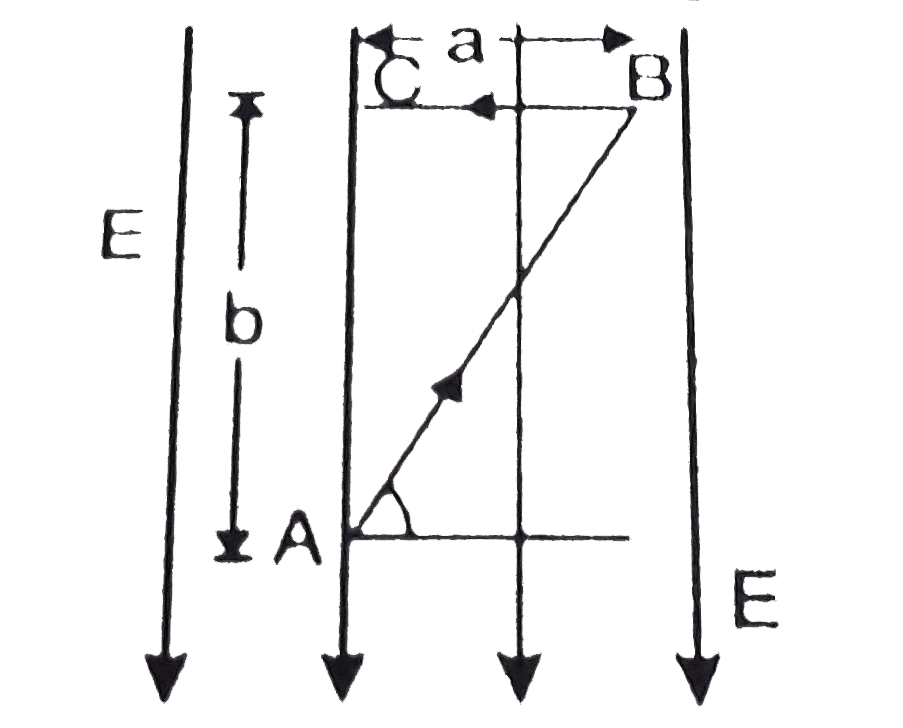What potential difference must be applied to produce an electric field that can acceleration an electric charge to one length the velocity of light ?
1352 V
2511 V
2531 V
3521 V
The correct Answer is:C
To find the potential difference required to accelerate an electric charge (in this case, an electron) to a velocity equal to one length the speed of light, we can follow these steps:
1. Identify the known values:
- Mass of the electron, m=9.1×10−31 kg
- Charge of the electron, Q=−1.6×10−19 C
- Speed of light, c=3×108 m/s
2. Determine the kinetic energy:
The kinetic energy (KE) gained by the electron when it is accelerated to a velocity v is given by the formula:
KE=12mv2
Here, we want to find the kinetic energy when v=c:
KE=12mc2
3. Substituting the values:
KE=12×(9.1×10−31 kg)×(3×108 m/s)2
KE=12×(9.1×10−31)×(9×1016)
KE=12×8.19×10−14 J
KE≈4.095×10−14 J
4. Relate the kinetic energy to potential difference:
The work done on the charge by the electric field is equal to the kinetic energy gained, which can be expressed as:
KE=Q⋅V
Rearranging gives:
V=KEQ
5. Substituting the values:
Since the charge of the electron is negative, we take the absolute value:
V=4.095×10−14 J1.6×10−19 C
V≈2.56×105 V
6. Final answer:
The potential difference required to accelerate the electron to the speed of light is approximately 2.56×105 volts, or 256,000 volts.
- Mass of the electron, m=9.1×10−31 kg
- Charge of the electron, Q=−1.6×10−19 C
- Speed of light, c=3×108 m/s
The kinetic energy (KE) gained by the electron when it is accelerated to a velocity v is given by the formula:
KE=12mv2
Here, we want to find the kinetic energy when v=c:
KE=12mc2
KE=12×(9.1×10−31 kg)×(3×108 m/s)2
KE=12×(9.1×10−31)×(9×1016)
KE=12×8.19×10−14 J
KE≈4.095×10−14 J
The work done on the charge by the electric field is equal to the kinetic energy gained, which can be expressed as:
KE=Q⋅V
Rearranging gives:
V=KEQ
Since the charge of the electron is negative, we take the absolute value:
V=4.095×10−14 J1.6×10−19 C
V≈2.56×105 V
The potential difference required to accelerate the electron to the speed of light is approximately 2.56×105 volts, or 256,000 volts.
Topper's Solved these Questions
- ELECTROSTATIC POTENTIAL AND CAPACITORSBOOK - DC PANDEY ENGLISHCHAPTER - ELECTROSTATIC POTENTIAL AND CAPACITORSEXERCISE - Check point 2.3
15 Videos
- ELECTROSTATIC POTENTIAL AND CAPACITORSBOOK - DC PANDEY ENGLISHCHAPTER - ELECTROSTATIC POTENTIAL AND CAPACITORSEXERCISE - Check point 2.4
15 Videos
- ELECTROSTATIC POTENTIAL AND CAPACITORSBOOK - DC PANDEY ENGLISHCHAPTER - ELECTROSTATIC POTENTIAL AND CAPACITORSEXERCISE - Check point 2.1
15 Videos
- ELECTROMAGNETIC WAVESBOOK - DC PANDEY ENGLISHCHAPTER - ELECTROMAGNETIC WAVESEXERCISE - Sec C
22 Videos
- ELECTROSTATICSBOOK - DC PANDEY ENGLISHCHAPTER - ELECTROSTATICSEXERCISE - Medical entrances gallery
37 Videos
Similar Questions
An accelerated electric charge emits
View SolutionElectric charges and fields
View SolutionElectric charges and fields
View SolutionElectric charges and fields
View SolutionElectric charges and fields
View SolutionElectric charges and fields
View SolutionElectric charges and fields
View SolutionThe potential difference points a and B in the given uniform electric field is :

View SolutionWhen an electric field is applied across a semiconductor,
View SolutionWhen an electric field is applied across a semiconductor,
View Solution
